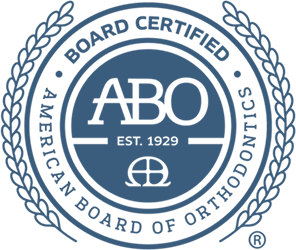Invisalign® and traditional braces are two effective options to straighten your teeth. In this blog, we explain the two options and their differences.
What Are Braces?
Braces are an orthodontic appliance used to treat the most complicated types of alignment issues. They can correct mild to severe issues, including gaps in teeth, overbites, underbites, buck teeth, crowding, mismatched midlines (when the center of the lower and upper front teeth do not line up), an open bite malocclusion (when there’s an opening or gap between the front teeth when the mouth is closed), and more!
How Do Braces Work?
At Stroope Orthodontics, we are proud to offer both metal and clear braces. With metal braces, we use thin wires and small brackets (metal squares, which are now smaller than they were in the past). This helps move teeth where they need to be, adhering the brackets to your teeth and connecting the wires to the brackets.
The wires will then apply slight pressure to the brackets, which move your teeth into the right position. With clear braces, it’s the same technique, but the brackets themselves are just made of clear plastic.
What Is Invisalign?
If you want to straighten your teeth discreetly, Invisalign is about as subtle as you can get. Invisalign involves plastic, clear aligners that are custom-made to fit snugly over your teeth.
These aligners are removable and almost invisible. You don’t have to feel embarrassed about your smile while you straighten your teeth. And removing them when you eat and brush your teeth means less adjustments to your food choices and oral hygiene.
How Does Invisalign Work?
Invisalign straightens teeth using clear aligners that function in a way similar to wires and brackets on traditional braces. They are made specifically to apply the right amount of pressure so teeth can move into the correct alignment. You will wear the aligners between 20 and 22 hours each day, and you change them out every few weeks so that your teeth are constantly moving into position.
Differences Between Invisalign & Braces
While these two treatments both straighten teeth, there are some differences:
Braces can tackle more complex issues than Invisalign, but Invisalign is definitely the more subtle option. Less people may notice you are undergoing orthodontic treatment with Invisalign.
Invisalign aligners are made of smooth plastic that won’t bother your mouth. Some patients find braces irritate the inside of their cheeks, though orthodontic wax can greatly reduce this discomfort.
Oral hygiene with Invisalign requires brushing after eating since your teeth need to be free of food particles before putting your trays back in. The trays also require daily maintenance with gentle cleaning and soaking. This will prevent discoloration and warping of your trays, and protect your teeth from tooth decay. In contrast, braces require both frequent cleaning and technique adjustments. Cleaning braces is made easier with special tools, like an electric toothbrush, interdental brushes, floss threaders, and a water flosser.
Although the length of treatment time varies with each patient, average treatment time for Invisalign is about 12-18 months and 12-24 months for braces.
Invisalign & Braces at Stroope Orthodontics
If you have any questions about Invisalign or braces, then contact us today! We look forward to hearing from you.





